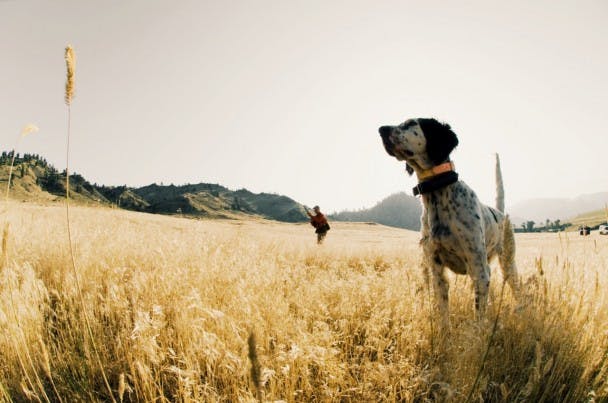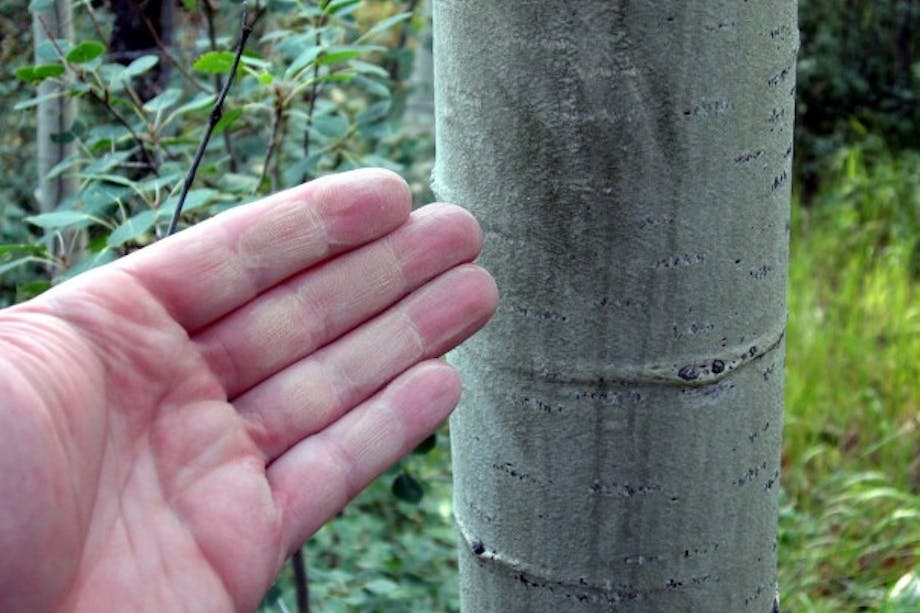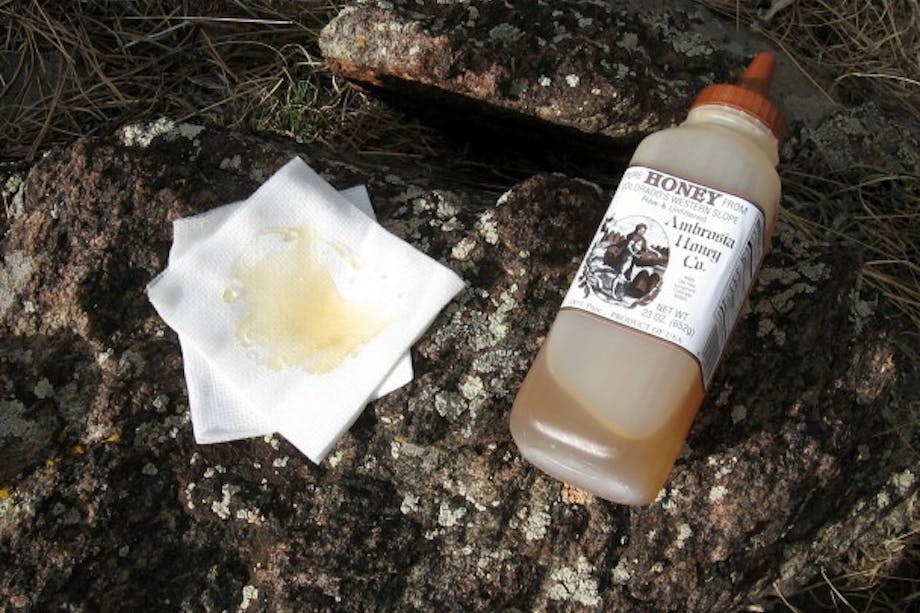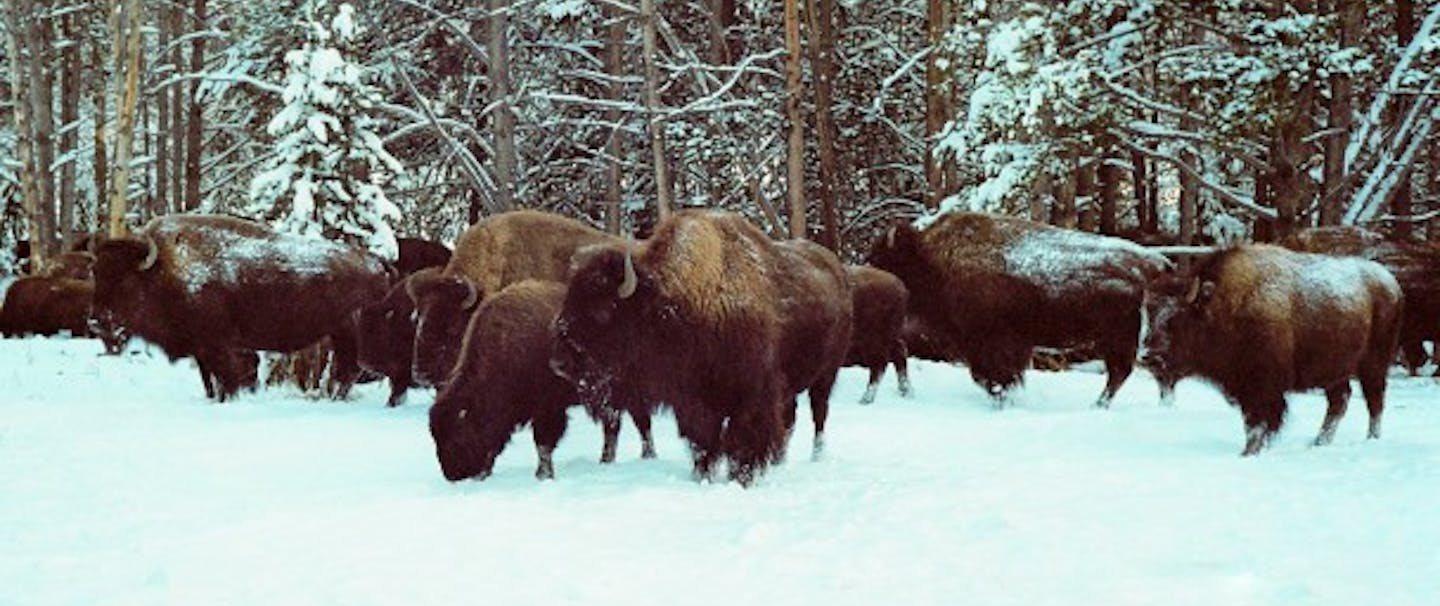 For over two decades, George Hickox has shown all levels of owners how to train great bird dogs. Today, he reminds hunters of 4 ways to prepare for injuries in the field.
For over two decades, George Hickox has shown all levels of owners how to train great bird dogs. Today, he reminds hunters of 4 ways to prepare for injuries in the field.
When spending time afield with your dog injuries can occur to your four legged buddy. Listed below are a few helpful hints to help your dog until you can get him to a vet.
1. Carry a couple of heavy duty rubber bands while in the fields hunting or going for a hike with your dog. If your dog were to run into barbed wire and cut the artery in his tongue the rubber bands can save the day. By slipping a heavy duty rubber band over the dog’s tongue the flow of blood would be staunched. It would be extremely difficult to tie a tourniquet around the dog’s tongue. Make sure the rubber bands are new and not last year’s bands in your field kit. Rubber bands dry out and become brittle. Make sure the rubber bands you carry will do the job.
2. When traveling with your dog keep him well hydrated with bottled water or water taken from his supply of drinking water at home. Changing the dog’s water from hard water to soft water can precipitate a bad case of Montezuma’s Revenge. If your dog is afflicted with diarrhea it will become dehydrated. A dehydrated dog will lack stamina, overheat quickly, and could face more health risks. Keep your dog well hydrated. 3. A dog does not benefit from a “he man” breakfast on the morning preceding exercise. Dogs receive the nutritional benefits of a balanced tier 1 diet eight to sixteen hours after ingestion of the food. Feeding the morning prior to exercise will dehydrate the dog, raise its internal body temperature, and possibly result in bloat. Bloat may develop into GVD which is life threatening. A sound rule is to not feed at least two hours prior to exercise or within one hour post exercise to reduce the chances of the dog getting GVD. Google Gastro Voluminous Distension for more information on GVD. We feed our adult dogs in the evening at least two hours after exercise and do not feed at all in the morning. This is for dogs exercising daily. If a dog were to only go to work for one day during the week there may be an advantage to not feeding the dog within 36 hours of the exercise demands.
3. A dog does not benefit from a “he man” breakfast on the morning preceding exercise. Dogs receive the nutritional benefits of a balanced tier 1 diet eight to sixteen hours after ingestion of the food. Feeding the morning prior to exercise will dehydrate the dog, raise its internal body temperature, and possibly result in bloat. Bloat may develop into GVD which is life threatening. A sound rule is to not feed at least two hours prior to exercise or within one hour post exercise to reduce the chances of the dog getting GVD. Google Gastro Voluminous Distension for more information on GVD. We feed our adult dogs in the evening at least two hours after exercise and do not feed at all in the morning. This is for dogs exercising daily. If a dog were to only go to work for one day during the week there may be an advantage to not feeding the dog within 36 hours of the exercise demands.
4. There are many seeds, weeds, and bacteria that a dog may come into contact with in the fields that owners should be aware of. Depending on the part of the country the dog is in cheat grass, foxtail, spear grass, and Nocardia bacteria can pose serious health risks for the canine. I highly recommend all owners to become knowledgeable about the risks involved with these threats. Along with tick borne diseases such as Lyme’s, Ehrlichiosis, Rocky Mountain Spotted Fever, and Babesiosis bacteria such as Nocardia that is in the soil can infect the dog simply from the dog inhaling the bacteria. Nocardia is bad stuff and can be fatal. All responsible owners kneed to become knowledgeable about the prevention and precautionary measures that will protect their dog from these risks.



